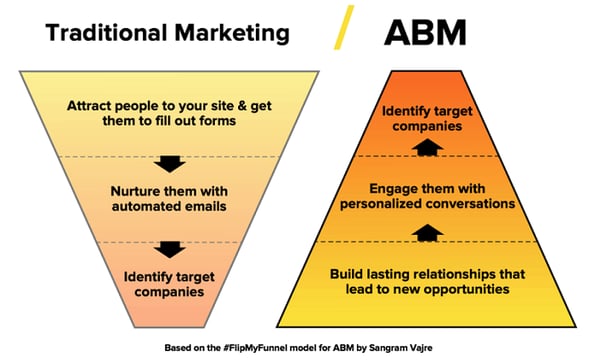Have you ever wondered what drives potential customers towards your business, sparking their interest and initiating a relationship that could last for years? Welcome to the world of demand generation, a critical element of modern marketing that can make all the difference when it comes to achieving long-term success.
Demand generation in marketing refers to the process and strategy of creating awareness and interest in your brand’s product or service, using a data-driven approach to nurture buyer relationships and convert them into loyal customers. In this essential guide, you’ll not only learn the difference between demand and lead generation, but also discover effective strategies and tactics that ensure your audience is well-educated about your offerings without the need for direct selling.
Ready to dive deeper into the world of demand generation and unlock its full potential for your business? Read on to understand the key components and the techniques that will propel your marketing efforts into new heights of success.
Understanding Demand Generation in Marketing
In today’s digital age, the battle for customers’ attention has never been fiercer. Amidst this competition, the concept of demand generation stands as a beacon for businesses eager to spread awareness about their products or services, create interest in them, and convert this interest into valuable customer action. But what exactly does demand generation entail, and why is it so crucial for businesses? Let’s dive in.
What is Demand Generation?
Fundamentally, demand generation is a strategic approach to marketing that aims to create a demand for a company’s products or services. At its core, it is all about shaping and influencing the perception of your potential customers, building brand recall and recognition, and nurturing prospects until they are ready to buy.
As cited on Amazon Ads, “Demand generation is a type of inbound marketing and is the umbrella term for the full marketing strategy or marketing funnel that creates interest in your brand’s product or service.” As this quote suggests, demand generation is the overarching strategy that encompasses various marketing activities designed to engage both current and potential customers, building a brand affinity and stimulating demand for your offerings.
Definition and Purpose of Demand Generation in B2B Marketing
In the context of B2B marketing, demand generation takes a more targeted and personalized approach to engage potential clients. It typically involves a deep understanding of your buyer’s journey, creating content and strategies that address specific needs at various intent stages of the funnel, and leveraging data-driven insights to optimize the process continually.
The purpose of demand generation in B2B marketing is multifaceted. It is not purely about driving immediate sales but aims to create awareness, educate prospects, grow market share, transition leads through the sales funnel, and ultimately nurture long-term customer relationships.
Key Components of a Successful Demand Generation Strategy
As with any marketing strategy, demand generation requires several fundamental ingredients for success. Three key components of a successful demand generation strategy include:
Customer Insights: Understanding your audience is essential to crafting a successful demand generation strategy. You need to know their needs, challenges, and the questions they may have about your product or service. Customer-focused research allows your brand to approach potential buyers from an empathetic standpoint and supply them with genuinely useful information, thereby building your brand’s credibility and trustworthiness.
High-Quality Content: As the proverbial saying goes, ‘content is king.’ This is particularly true for demand generation. From blog posts and white papers to webinars and social media updates, creating informative, relevant, and engaging content is key to capturing and holding your audience’s attention.
Multi-Channel Distribution: Once you’ve created stellar content, you must distribute it across multiple channels to reach your target audience effectively. Whether you’re using social media, email newsletters, SEO, or even traditional physical channels, your content needs to be where your prospective customers are.
The Distinction Between Demand Generation and Lead Generation
Demand generation and lead generation are two terms that are often used interchangeably. However, they have distinct meanings and should not be confused. To quote New Breed Marketing, “Demand generation is a data-driven marketing program leveraging the inbound methodology to drive awareness and interest throughout the entire buyer and customer lifecycle.” This highlights that demand generation encompasses the whole funnel, from raising brand awareness to fostering customer loyalty.
In contrast, lead generation is a subset of demand generation and focuses purely on stimulating and capturing interest for a specific product or service with the intention of developing a sales pipeline. While demand generation aims to create a broader demand for your products or services, lead generation looks to convert that generated demand into something tangible – leads who have shown a distinct buying interest.
Significance of Educating the Target Audience Without Direct Selling
Traditional, aggressive selling tactics are becoming less effective in our contemporary digital landscape. Modern consumers resent them and view them as intrusive. Today, the key to a powerful marketing strategy lies in educating your target audience without directly pushing for a sale.
Educational content positions your brand as an authoritative leader in your field, builds trust with your audience, and subtly persuades them about your product’s or service’s value. Over time, this strategic approach can foster long-term customer relationships, enhance customer loyalty, and result in reliable, returning business.

Source: HubSpot Blog
Effective Demand Generation Tactics
Since we now understand what demand generation is and the significance of educating your target audience, let’s delve deeper into how to put these strategies into action. But it’s essential to know that successfully executing demand generation strategies isn’t about bombarding your potential customers with promotional content. Instead, it’s more about shifting the focus, understanding your audience, and how well they are acquainted with your brand. In other words, it’s about inbound marketing.
Inbound marketing plays a crucial role in B2B demand generation, and its importance can’t be overstressed. As Amazon Ads explains, “A demand generation marketing strategy starts by assessing how well a potential audience knows your brand, identifying ways to introduce that brand to a new buyer group, and then nurturing that relationship by gaining trust and authority.”

Inbound marketing is not just about having relevant content; however, it also implies aligning those content strategies with direct sales efforts to nurture leads effectively. It is a shift away from simply maintaining content calendars towards using those contents as tools for attracting, engaging, and delighting customers.
Strategies for capturing and creating demand
Being familiar with the role of inbound marketing, the next step is to understand how to use it specifically. The goal is to capture and create demand. As per Amazon Ads, “Demand Capturing: Intent Channels and Content Examples” include top email marketing services, identity protection companies, and SEO for startups.
But, it’s important to remember that no one-size-fits-all strategy works for every business. It would be best to tailor your methods to suit your brand, product, or service, and more importantly, your target audience’s specific needs. Therefore, analyzing your audience, their needs, their behavior, and even their feedback is paramount. Such analysis will provide valuable insights, shaping your content strategy and overall inbound marketing efforts for capturing and creating demand.
Metrics and KPIs to measure the success of demand generation efforts
Finally, after implementing demand generation tactics, you need to measure your success. Metrics and KPIs can shed light on how well your strategies are working and where there may be room for improvement. Some highly critical metrics to consider include brand search volume, organic traffic to high-intent pages, conversion rates, and customer lifetime value.
These KPIs give a quantifiable measure of the success or failure of your demand generation efforts. They highlight which strategies are worth continuing or increasing and which ones may need to be dropped or modified.
Frequently Asked Questions
What is the role of inbound marketing in B2B demand generation?
Inbound marketing is pivotal in B2B demand generation as it helps businesses attract, engage, and delight customers organically. It involves creating relevant content that provides value to the target audience, fostering long-term relationships and creating loyal customers.
How can I use inbound marketing to capture and create demand?
Inbound marketing involves creating and sharing valuable content designed around your target audience’s needs and preferences. You use this content to attract potential customers, engage with them, delight them, and convert them into loyal customers.
What are some examples of content for demand capturing?
Examples of content for demand capturing are top email marketing services, identity protection companies, and SEO for startups. The idea is to create content that appeals directly to what your target audience is looking for.
How can I measure the success of my demand generation efforts?
You can measure the success of your demand generation efforts by monitoring KPIs and metrics like brand search volume, organic traffic to high-intent pages, conversion rates, and customer lifetime value.
What are high-intent pages?
High-intent pages are website pages that a visitor lands on with the intention of purchasing or converting. These are typically squeeze pages, sales pages, or product pages.
In conclusion, demand generation is a multifaceted, data-driven marketing strategy. It involves understanding your target audience, creating valuable content, capturing and creating demand, and measuring your efforts’ success. Implementing effective demand generation tactics requires a strategic, well-planned approach but can deliver significant returns in the form of higher brand awareness, customer engagement, and ultimately, increased sales.

